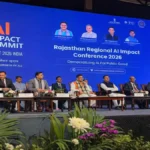Indian Public Sector Companies Seek Overseas Critical Mineral Assets
In a strategic move to secure essential minerals, Indian public sector giants Coal India, NMDC, and ONGC Videsh are actively pursuing overseas assets. This initiative is aimed at reducing India’s dependence on imports and ensuring a stable supply of critical minerals necessary for various industries.
The Need for Critical Minerals
The demand for critical minerals such as lithium, cobalt, and rare earth elements has surged due to their essential role in manufacturing electronics, renewable energy technologies, and defense equipment. India, with its growing technological and industrial sectors, requires a steady supply of these minerals to sustain its economic growth and technological advancement.
Coal India’s Strategic Plans
Coal India Limited (CIL), primarily known for its coal production, is diversifying its portfolio by seeking investments in lithium and cobalt mines abroad. These minerals are crucial for battery production, which is a key component of India’s push towards electric vehicles (EVs) and renewable energy storage solutions.
NMDC’s Overseas Ventures
The National Mineral Development Corporation (NMDC) is also stepping up its efforts to acquire stakes in mineral-rich regions globally. NMDC’s focus is on securing iron ore, copper, and other critical minerals that are vital for steel manufacturing and other industrial applications.
ONGC Videsh’s Expansion
ONGC Videsh, the international arm of Oil and Natural Gas Corporation (ONGC), is exploring opportunities in countries with abundant critical mineral resources. Their objective is to ensure a diverse and secure supply chain for India’s energy and industrial sectors.
Government Support and Policy Framework
The Indian government is backing these initiatives through policy support and international diplomacy. Efforts are being made to negotiate favorable terms with mineral-rich countries and streamline investment processes for Indian companies.
Conclusion
By acquiring overseas critical mineral assets, Coal India, NMDC, and ONGC Videsh aim to bolster India’s resource security. This strategic move is not only crucial for meeting the country’s industrial demands but also for enhancing its geopolitical standing.

Why This News is Important
Securing Resource Supply Chain
This news is significant as it highlights India’s proactive steps towards securing a stable supply of critical minerals. These minerals are indispensable for the country’s ambitious plans in sectors like renewable energy, electronics, and defense.
Economic Implications
The acquisition of overseas mineral assets will reduce India’s import dependency, thereby saving foreign exchange and boosting the country’s economic resilience. This move is expected to create more jobs and foster technological advancements within India.
Strategic Autonomy
By investing in critical minerals abroad, India is aiming to achieve strategic autonomy. This reduces vulnerabilities associated with geopolitical tensions and trade disruptions, ensuring a steady supply of essential materials.
Technological Advancement
The availability of critical minerals will significantly aid in the technological advancement of India. It will support the growth of high-tech industries and innovation, essential for the country’s progress in the global technology landscape.
Global Partnerships
This initiative fosters stronger global partnerships and collaborations. By engaging with mineral-rich countries, India is enhancing its international relations and creating opportunities for mutual growth and development.
Historical Context:
Past Initiatives
India has a history of attempting to secure mineral resources from abroad. In the past, Indian companies have made several attempts to acquire stakes in overseas mines, though with varied success. This new wave of initiatives appears more coordinated and strategic.
Government Policies
The Indian government has been progressively rolling out policies to support the acquisition of critical minerals. Initiatives like “Make in India” and the push for renewable energy have underscored the importance of securing these resources.
Global Competition
The global race for critical minerals has intensified, with countries like China and the USA heavily investing in securing these assets. India’s current efforts are part of a broader strategy to compete in this global arena.
Technological Revolution
The ongoing technological revolution, driven by the need for cleaner energy and advanced electronic devices, has placed critical minerals at the forefront of economic strategies worldwide. India’s participation is crucial for its technological aspirations.
Key Takeaways from Indian Public Sector Companies Seeking Overseas Critical Mineral Assets
| Serial Number | Key Takeaway |
|---|---|
| 1 | Coal India, NMDC, and ONGC Videsh are seeking overseas mineral assets. |
| 2 | The focus is on securing critical minerals like lithium, cobalt, and rare earth elements. |
| 3 | These efforts aim to reduce India’s dependency on imports and ensure a stable supply. |
| 4 | The Indian government is providing policy support and facilitating international negotiations. |
| 5 | Securing these minerals is crucial for India’s technological and economic advancement. |
Important FAQs for Students from this News
1. Why are Coal India, NMDC, and ONGC Videsh seeking overseas mineral assets?
Coal India, NMDC, and ONGC Videsh are seeking overseas mineral assets to secure a stable supply of critical minerals like lithium, cobalt, and rare earth elements. These minerals are essential for manufacturing electronics, renewable energy technologies, and defense equipment, thereby reducing India’s dependence on imports.
2. What are critical minerals, and why are they important?
Critical minerals include lithium, cobalt, rare earth elements, and others that are essential for high-tech industries, renewable energy solutions, and defense systems. They are crucial for the production of batteries, electronics, and various advanced technologies.
3. How does acquiring overseas mineral assets benefit India’s economy?
Acquiring overseas mineral assets reduces import dependency, saves foreign exchange, and enhances economic resilience. It also supports job creation, technological advancements, and industrial growth within India.
4. What role does the Indian government play in these initiatives?
The Indian government supports these initiatives through favorable policies, international diplomacy, and facilitating negotiations with mineral-rich countries. This policy framework aims to streamline investment processes and secure critical resources for the country.
5. How does this move align with global trends?
This initiative aligns with global trends where countries are aggressively securing critical mineral resources to support their technological and industrial sectors. India’s efforts are part of a broader strategy to compete and collaborate internationally in this domain.
Some Important Current Affairs Links
















